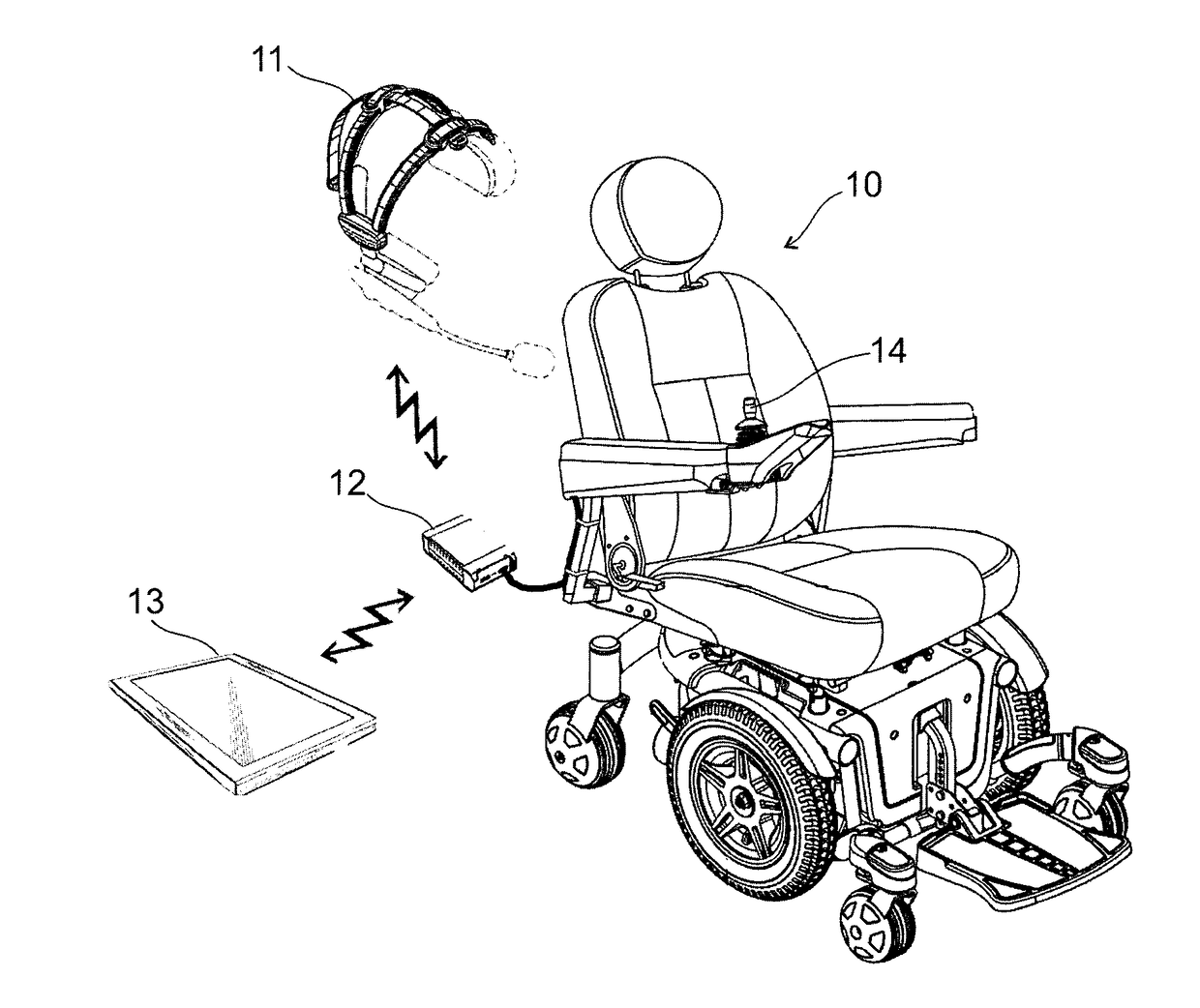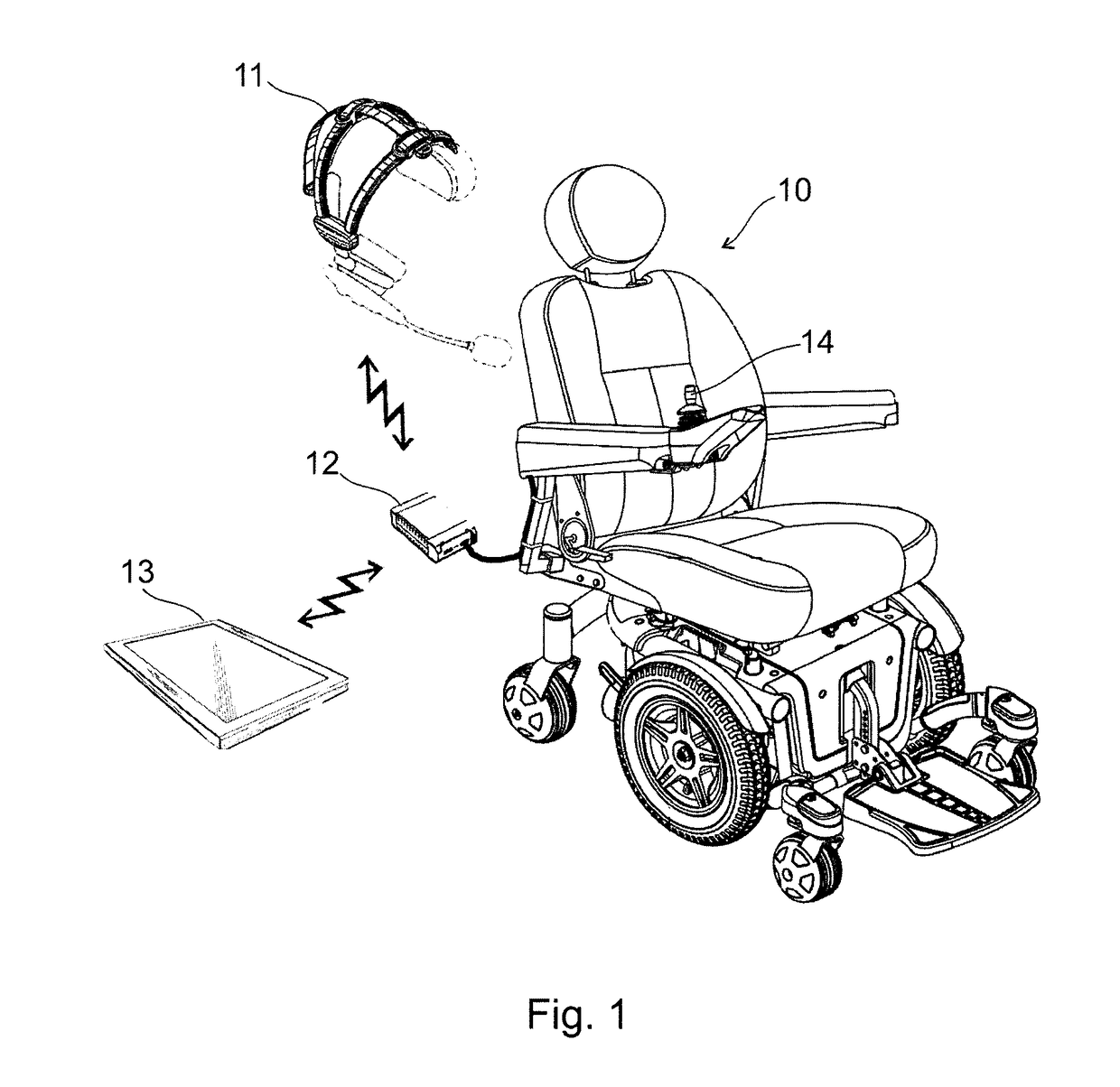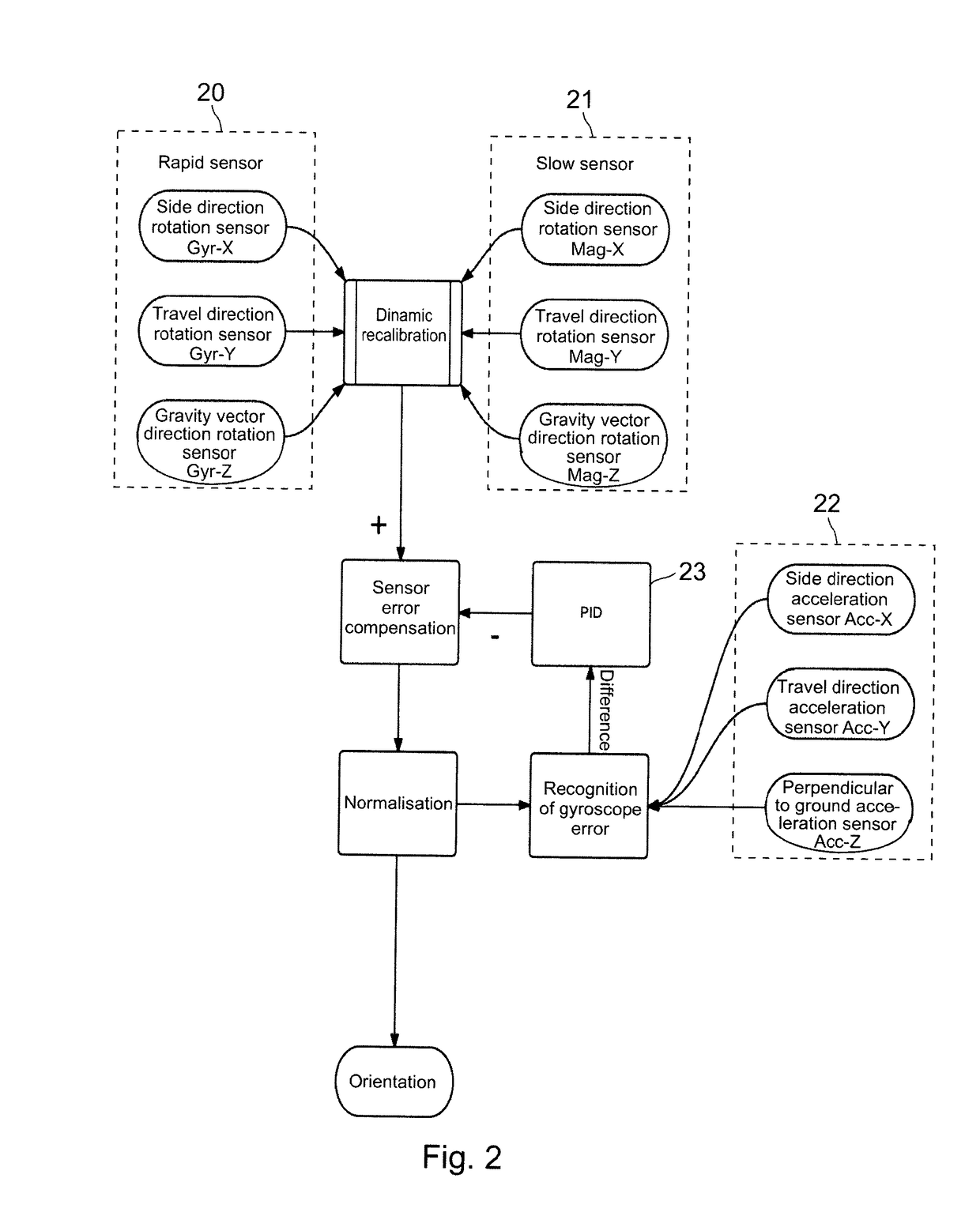Personal Vehicle, And Control Apparatus And Control Method Therefore
a control apparatus and electric wheelchair technology, applied in the field of personal vehicles, can solve the problems of wheelchairs that may accelerate too much, the maximum acceleration of the vehicle cannot be utilized, and oscillation between, so as to improve the ride stability
- Summary
- Abstract
- Description
- Claims
- Application Information
AI Technical Summary
Benefits of technology
Problems solved by technology
Method used
Image
Examples
Embodiment Construction
[0029]In FIG. 1 a schematic spatial drawing of an exemplary electric wheelchair 10 provided with a control apparatus according to the invention is shown. The invention may of course be applied in conjunction with other personal vehicles, but the wheelchair-embodiment is described in more detail herebelow.
[0030]In the illustrated preferred embodiment the wheelchair 10 may be controlled, in addition to applying a conventional joystick 14, by means of so-called body-mounted inertial sensors and motion sensors. According to the invention, at least two motion sensing units and a processing unit are applied in the following arrangement: a first motion sensing unit 11 is mounted on a freely movable body part of the driver, and a second motion sensing unit 12 is secured to the wheelchair 10, i.e. to the personal vehicle. Both motion sensing units use the environment as a reference base, in which the vehicle and the driver are present. In a preferred embodiment, the reference base, i.e. the ...
PUM
 Login to View More
Login to View More Abstract
Description
Claims
Application Information
 Login to View More
Login to View More - R&D
- Intellectual Property
- Life Sciences
- Materials
- Tech Scout
- Unparalleled Data Quality
- Higher Quality Content
- 60% Fewer Hallucinations
Browse by: Latest US Patents, China's latest patents, Technical Efficacy Thesaurus, Application Domain, Technology Topic, Popular Technical Reports.
© 2025 PatSnap. All rights reserved.Legal|Privacy policy|Modern Slavery Act Transparency Statement|Sitemap|About US| Contact US: help@patsnap.com



